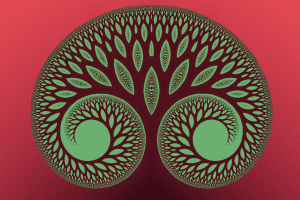Every day, medical researchers look to learn more about rare diseases, symptoms, and treatment. Recently, the Muscular Dystrophy Association (MDA) connected with Dr. Priya Sunil Kishnani, MD, MBBS to discuss what is new in the world of Pompe disease.
Pompe Disease
Pompe disease is a genetic disorder caused by a mutated GAA gene. It presents in 1 of every 40,000 births. Normally, the GAA gene creates acid maltase, which breaks down complex sugars called glycogen. But people with Pompe disease are acid maltase deficient. As a result, glycogen builds up in the body and causes issues with muscle, tissue, and organ function. Without treatment, Pompe disease is life-threatening.
There are three main subsets of Pompe disease, all of which have varying symptoms and onsets:
- Classic infantile-onset: Symptoms appear within months of birth. These include heart and respiratory issues, organ (liver) enlargement, and muscle weakness. If untreated, this condition is fatal within 2 years.
- Non-classic Infantile-onset: Symptom onset begins around age 1. Heart failure is less common than in classic infantile-onset Pompe disease. Instead, symptoms include progressive muscle weakness and delayed motor development. Generally, this condition is fatal by early childhood.
- Late-onset: Late-onset Pompe disease can begin in childhood or adulthood. However, it can also refer to any subset of the disorder where the heart is not impacted. It tends to be a somewhat milder form of the disorder. The main symptom is progressive muscle weakness, which could result in respiratory failure.
Learn more about Pompe disease.
New Insights from Dr. Priya Sunil Kishnani
As described above, Pompe disease is a spectrum and presents in a variety of ways. Dr. Kishnani has been researching the condition for nearly 30 years. Now, she is uniquely poised to explain how the realm has changed.
Those with classic infantile-onset or non-classic infantile-onset Pompe disease require intensive and somewhat immediate treatment. This includes enzyme-replacement therapy, physical and speech therapy, and occupational therapy. Parents should also begin building connections with cardiologists and pulmonologists.
These same therapies are recommended for patients with late-onset Pompe disease, although the need is not as immediate.
However, one of the first changes needed to benefit these patients is screening. Newborn screening panels, at birth, can highlight potential genetic disorders. Yet, as of this past February, only 20 states (and D.C.) screened newborns for Pompe disease.
Therapeutic Drawbacks for Pompe Disease Treatment
Gene therapy and second-generation enzyme-replacement therapies are the next step in treating Pompe disease. While ERTs are beneficial to patients, there are some drawbacks:
- Price and accessibility. According to Dr. Kishnani, ERTs cost up to $300,000 per year. This makes it extremely difficult for some families to be able to afford treatment. It also means that the treatment is only accessible to a specific subset of people. Outside of the treatment, there are other ways to improve patient outcomes, including good nutrition, physical therapy, and exercise. However, once again, some groups have difficulty gaining access.
- Targeted care. ERTs help clear glycogen from the body. In terms of moving excess glycogen from the heart, these are extremely successful. Yet Dr. Kishnani states that glycogen also builds up in skeletal muscle. Unfortunately, ERTs do not effectively remove glycogen from these areas, causing conditions to worsen.
- Immune response. In some patients, the immune system mistakenly attacks the replacement enzyme. For babies who create no GAA enzyme, their body produces antibodies to fight the “invader.” This type of severe immune response can be fatal. So, ERTs need to be created in a way that tricks the immune system into not attacking.
However, Dr. Kishnani hopes that new therapeutic options will improve patient access and outcomes.
Recent Research and Treatment Advances
Currently, second-gen ERTs are being explored in Phase 3 clinical trials. These therapeutic options aim to better reduce glycogen levels in skeletal levels. Additionally, second-gen ERTs might be more effective even at lower doses.
Gene therapies are being explored in Phase 1 clinical trials. Gene therapy could address the underlying cause of the disorder by replacing mutated genes with healthy ones.
Next, researchers are exploring the impact of early ERT dosing on patient outcomes. Finally, this research is shaping research for other conditions like spinal muscular atrophy and Duchenne muscular dystrophy.
The Muscular Dystrophy Association is currently planning the Pompe Disease Patient-Focused Drug Development Meeting to allow patients and their families to tell stakeholders about their individual experiences. Though COVID-19 delayed the event, you can find updates here.








